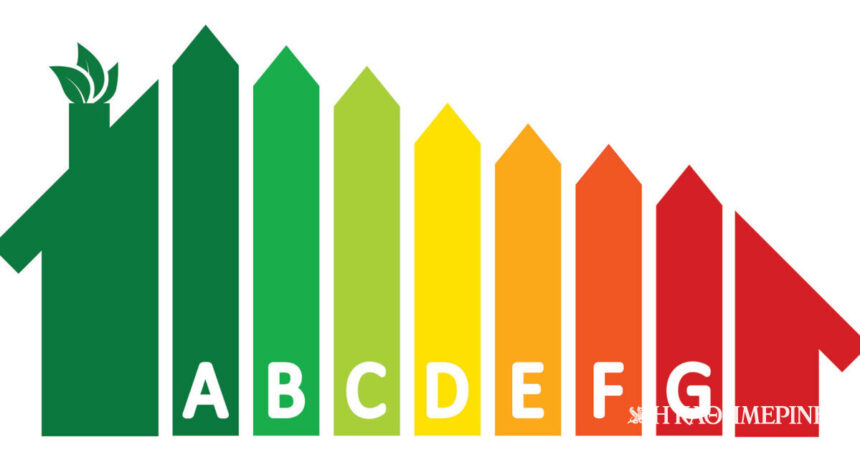With the goal of the energy transition now at the center of decision-making at EU level, “tectonic” changes are coming in the real estate market.
In the coming years, homes that do not have insulation and are classified in the lowest categories of the energy certificate will become unmarketable, as, based on a recent directive passed by the European Parliament, they will not be able to be sold or leased, unless they are upgraded in terms of energy by at least two categories. This change will come into force from 2030, although it is not excluded that there will be extensions and variations in the way of implementation, depending on when the new regulation will be adopted by each member state, but also the further specialization that will be done in the individual measures .
What is certain is that in the coming years projects worth tens of billions of euros will have to be promoted for the energy upgrade of the country’s particularly aging building stock, in order to improve the quality of life of households and to enhance the value of their property. Already, the capital gains created by the energy upgrade are also reflected in the sale prices, as the “greenest” properties also ensure higher prices, due to the greater demand. At the same time, according to real estate market executives, the most energy efficient properties tend to sell faster.
The average asking price in the whole of Attica for the residences classified in the highest A+ category of the energy certificate amounts to 4,800 euros/sq.m.
Selling prices that are 140% more expensive are ensured by the most energy efficient houses in Attica, compared to those classified in the lowest category of the Energy Performance Certificate (G). According to his data Spitogatos Property Insightsthe average asking price in the whole of Attica for the residences classified in the highest A+ category of the energy certificate amounts to 4,800 euros/sq.m., since, after all, it usually concerns newly built constructions.
On the contrary, the houses, which are older and do not have the required energy efficiency (e.g. they do not have insulation and still use heating oil), show an average asking price of 2,000 euros/sq.m.
There is a significant gap between the lowest category and category C, which refers to properties built as a rule, between 1995 and 2010, which are also one of the most sought-after categories, as they combine relatively modern specifications, while being more affordable than a newly built structure. Such a property costs an average of 3,000 euros/sq.m, i.e. it is 50% more expensive compared to a property without substantial energy efficiency.
In the northern suburbs, which are among the most expensive areas of Attica and where there is a lot of demand, especially from Greek buyers, the discrepancy between the greenest homes and those of category G is much smaller
However, according to the relevant data and depending on the area of interest, there are very interesting variations. For example, in the northern suburbs, which are among the most expensive areas of Attica and where there is great demand, especially from Greek buyers, the discrepancy between the greenest homes and those of category G is much smaller. Specifically, it does not exceed 46% as the properties in the lowest category of the energy certificate show an average asking price of 2,815 euros/sq.m.at a time when the newly built and greener houses are sold for 4,115 euros/sq.m.
Paradoxical phenomenon
In fact, the paradoxical phenomenon also occurs, where the properties classified in the highest categories are cheaper based on the price in euros/sq.m. So, properties of class C of the energy certificate are sold instead for 2,640 euros/sq.m., or 6% cheaper.
The main reason this is observed is that these properties are generally larger than those in the lower category, which is one of the special characteristics of the housing stock in the northern suburbs.
Over the years, the properties built in these areas offered larger areas, compared to those of the 1970s and 1980s. As a rule, in the real estate market, the price per sq.m. in the largest properties it is a little lower compared to the equivalent of the smaller properties.
So, for example, a 2000 apartment in Marousi can be 120 sq.m. and to be sold for 317,000 euros, i.e. approximately 2,650 euros/sq.m., while an apartment from 1980 in the same area, has a surface area of 80 sq.m. and to be sold for 225,000 euros, or approximately 2,800 euros/sq.m.
A modern apartment in the center of Athens today costs almost 4,000 euros/sq.m. or 123 % more than an old apartment in the same area
However, in most areas there are large discrepancies, which is considered normal, as the price does not only reflect the higher energy efficiency of the respective property, but also its young age. In addition, in the last two years the cost of building “green” houses has increased by at least 50-60%, due to the rise in the cost of materials (due to the war in Ukraine), which in fact shows no particular signs of slowing down or even stabilizing. Therefore, a modern apartment in the center of Athens today costs almost 4,000 euros/sq.m. or 123.5% more than an old apartment in the same area, whose average asking price is 1,785 euros/sq.m.




